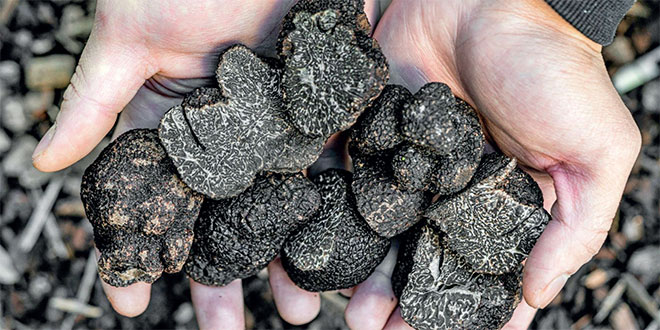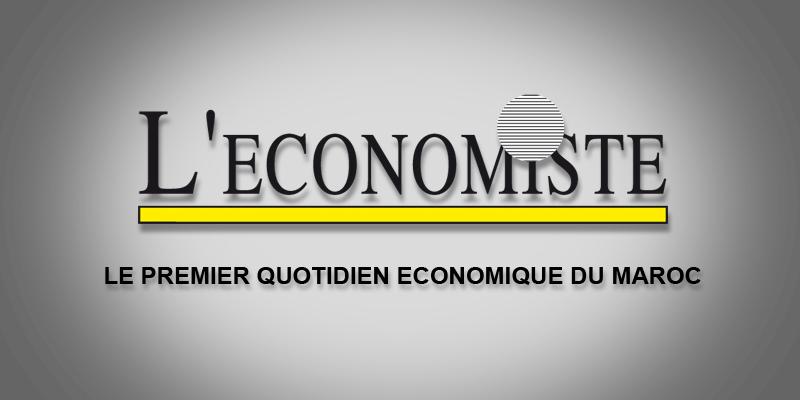Morocco, with its diverse landscapes and unique climate, is home to an unsuspected treasure: truffles. These underground mushrooms, true gems of the Moroccan local territories, thrive in sometimes extreme climatic conditions, revealing an astonishing resilience. Behind their discretion lies an ecological and economic treasure trove for the most vulnerable rural areas.

Three Moroccan researchers, Soukaina Hakkou, Mohamed Sabir, and Nadia Machouri, from Mohammed V University in Rabat, Morocco, and the National Forest Engineering School in Salé, have been working on a research project to map truffle species in Morocco. Researchers have also documented their geographical distribution and productivity, and suggested ways of developing them sustainably. In the arid and semi-arid lands of Morocco, truffles, locally known as “terfès”, thrive in a discreet symbiosis with the host plants that populate these regions. There are two main types of truffle in Morocco: desert truffles, which include the Terfezia and Tirmania genera, and the “real truffles” of the Tuber genus. While the former are adapted to the sandy soils and harsh climate of Saharan and semi-arid regions, the latter, notably Tuber melanosporum, prefer the holm oak forests of more temperate regions. The diversity of species reflects the vastness and variety of Moroccan ecosystems. From north to south, regions such as the Maâmora, the Sahel Doukkala-Abda, the North-East region and the Moroccan Sahara are all home to their own species. The Maâmora, for example, is famous for its sandy soils and oak and pine plantations, which favor the emergence of species such as Terfezia arenaria and Tuber oligospermum. The Sahara, despite its scarce rainfall, remains the preferred domain for species such as Tirmania nivea, capable of surviving in extreme conditions. Each region has its own specific ecological characteristics, challenges and potential. These truffles are not only a natural treasure, they are also a luxury product sought after well beyond Morocco’s borders. Markets in the Middle East (Saudi Arabia, Kuwait and Qatar) are crazy about white desert truffles, which can fetch up to 1,500 Dirhams (USD 150) a kilo on the market, while the so-called “true truffle” species find takers on Europe’s gourmet tables. In Spain, Italy and France, for example, Moroccan truffles such as Tuber oligospermum are highly prized for their resemblance to the white Alba truffle, while black truffles can fetch 12,000 dirhams (USD 1.200) a kilo on French markets.
Poorly exploited potential
Despite its strengths, the industry’s potential remains under-exploited. A SWOT analysis highlights its strengths, weaknesses, opportunities and threats. Among its major assets, the diversity of species, with almost 12 types of desert truffle and 5 real truffles, is an invaluable asset. These truffles, a gift of nature, require little or no human intervention for their production, which sets them apart from conventional agricultural crops. They are also adapted to difficult climatic conditions and play an essential ecological role in preventing desertification. In economic terms, their designation as a “ local ” product can boost the competitiveness of producing regions, while offering a specific territorial identity. However, major weaknesses remain. The lack of regulation and formal organization is holding back the structuring of the sector. In the face of these challenges, there is no shortage of opportunities. Strong international demand, particularly from luxury markets, is opening up promising prospects. The development of truffle cultivation, as demonstrated by the success of Tuber melanosporum on the Debdou and Imouzzer Kandar farms, could reduce pressure on natural production while increasing yields. In addition, proper regulation, combined with development and marketing initiatives, could transform the sector into an economic pillar for the country…
Black truffles made in Morocco
Although truffle growing is a recent phenomenon in Morocco, it represents a promising innovation in the development of the truffle industry. Two regions, Debdou and Imouzzer, stand out for their pioneering initiatives in the cultivation of black truffles, which have been adapted to local conditions through research and investment. In Debdou, the history of truffle cultivation began in 2000 with Dr. Abdelaziz Laqbaqbi, who introduced the first holm oak seedlings inoculated with truffle spores. Set up on the Tifezouine farm, this experiment covers 4.2 hectares in a semi-arid valley with limestone soil. The climatic conditions were favorable, and the first black truffle harvests began in 2006. Encouraged by this success, Dr. Laqbaqbi extended his project to Imouzzer du Kandar, in the Fez -Meknès region. Two truffle farms were created: Ain Jarrah, covering 12 hectares, and Ain Chiffaa, covering 1,000 hectares. These farms benefit from conditions similar to those in Debdou, but with higher rainfall. The results are convincing. At Imouzzer, black truffles begin to be harvested in the third or fourth year after planting. The cultivation method includes innovative practices such as targeted irrigation and the use of “truffle traps”, holes filled with spore-enriched substrates. This approach guarantees optimum yields while preserving the sustainability of the plantations. These two exemplary projects show that truffle growing can not only diversify Moroccan agriculture, but also offer a viable alternative to the collection of wild truffles, which are increasingly vulnerable to climate hazards.
A.Bo


























